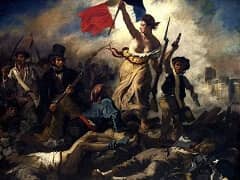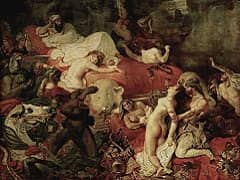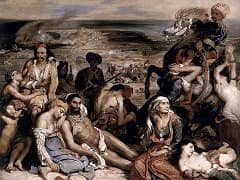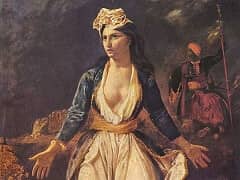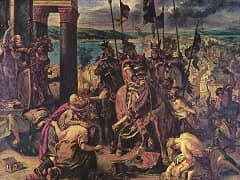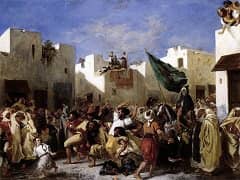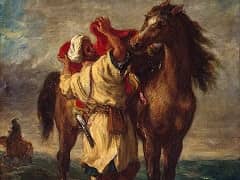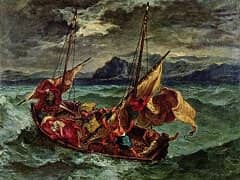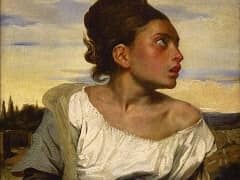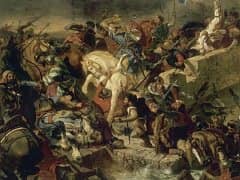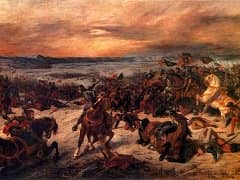The Barque of Dante by Eugene Delacroix
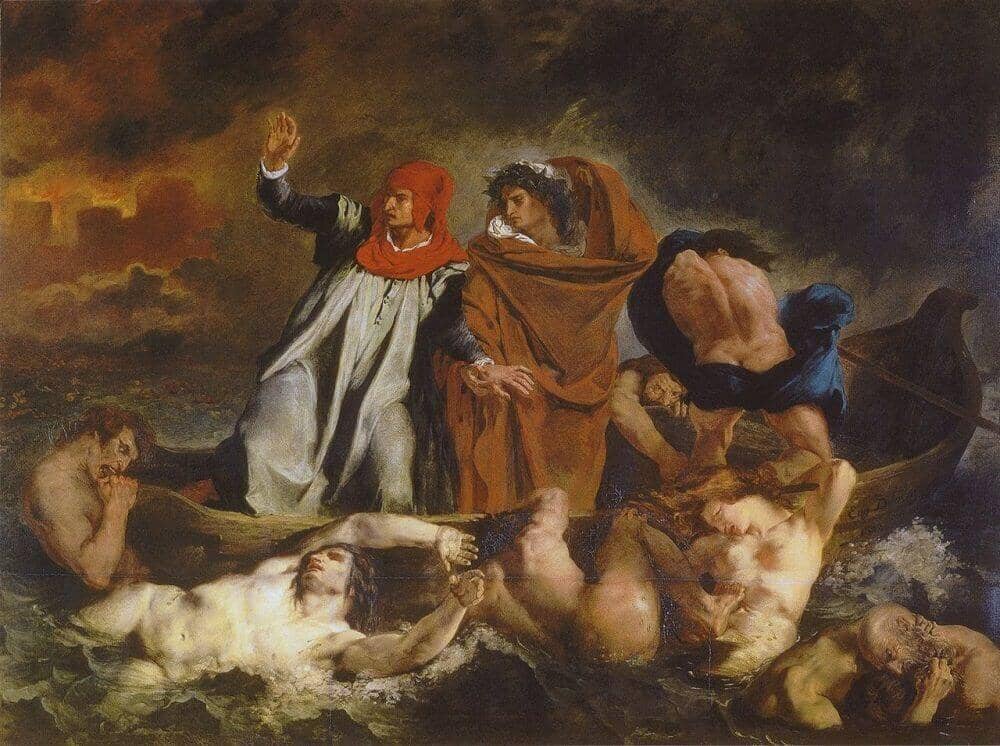
The Barque of Dante was the work with which Delacroix, at age twenty-four, for the first time appeared in the Salon and met the gaze of the public.
Here Delacroix is deliberately breaking with his Neoclassical training (for we must not forget that he had studied with Pierre-Narcisse Guerin, a disciple of David). The atmosphere of dramatic tension in which horror mingles with mystery, the expressionism of the faces, the tormented aspect of the damned, the tumultuous movement of the scene, the contrasts of red and green - all these are directly contrary to the categorical teachings of David. It is to other artists that Delacroix is here indebted: to Michelangelo for the powerful forms, to Gros for the dark tonality of the overall harmony.
The novel accent of the work which, in its daring and vigorous technique, was an extension of Gericault's Raft of the Medusa (Salon of 1819), caused surprise and evoked lively reactions from both critics and public. Among the former, some proved quite virulent, as, for instance, Delecluze, who did not hesitate to write in Le Moniteur universel of May 18, 1822: "This picture is no picture at all; it is, to use the jargon of art students, a real tartouillade. . . ."

